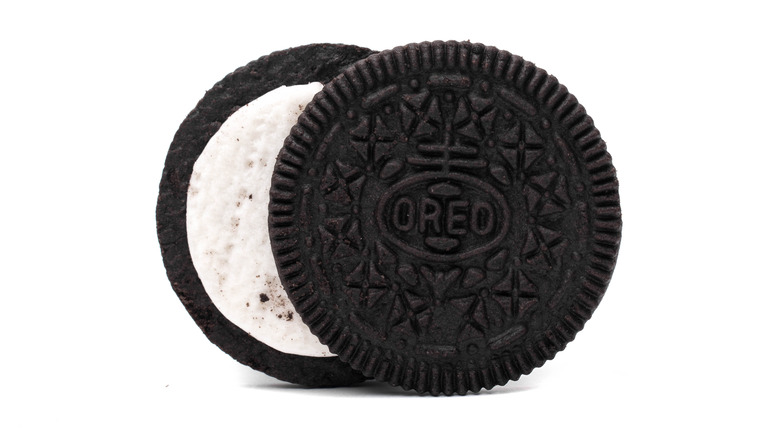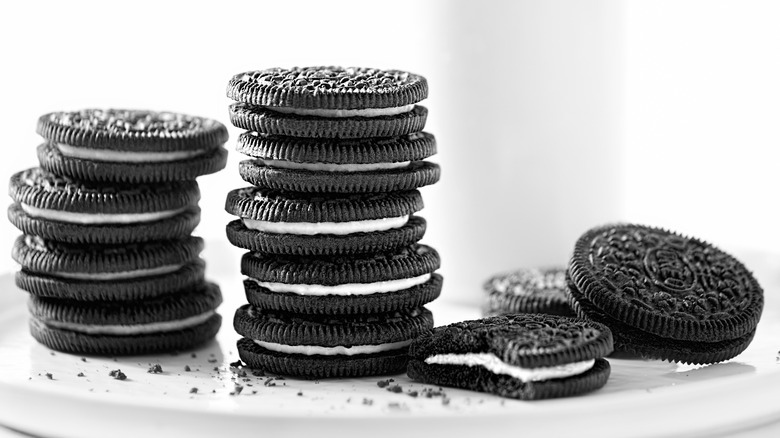New Study Asks If It's Possible To Perfectly Split An Oreo
Once physicists were finally able to split the atom, it was only a matter of time until our greatest minds turned to an issue that has truly vexed humanity: is it possible to split an Oreo cookie so that there's an equal amount of creme filling on each side? Even if you're the type of person who prefers to dunk your Oreo in a glass of milk, it's likely you have at one time found yourself staring at a chocolate wafer without any creme and wondering where you went wrong.
If you're not familiar with Oreology, which CNN explains is the science of everyone's favorite sandwich cookie, then you probably haven't heard about the latest round of rigorous experiments conducted under strict laboratory conditions. (No, we're not kidding.)
Curious Oreologists — led by Crystal Owens, a mechanical engineering researcher at the Massachusetts Institute of Technology (MIT) — recently published the findings of these experiments in the journal Physics of Fluids. The researchers looked at contributing factors like storage conditions, rotation rate, adhesion level, and postmortem creme analysis in an attempt to establish whether it is really possible to achieve the dream of Oreo lovers everywhere: perfectly equal creme distribution across two cookie wafers. Sadly, the results may disappoint you.
Oreometer tests show conclusive results
One happy result of the experiments published in the scientific journal Physics of Fluids was an entirely new tool for precision cookie testing: the Oreometer (in reality, a rheometer with a slightly amended punny name). Designed to use a consistent and specific torque to split the cookies, researchers hoped the Oreometer would help them discover what amounted to the perfect method for splitting the Nabisco-made sandwich cookie.
Creme failures were charted on graphs, and over the course of the experiments it was determined that the way you twist actually has little to do with the results. What really matters, the study notes, is preexisting adhesion levels between the two wafers. The results were conclusive: an uneven creme split was noted in every case. In fact, within a given box of Oreos, researchers were able to identify the side on which the least amount of creme would adhere with up to 80% accuracy, as it really comes down to how the cookies are packed.
What researchers could not do, however, was split the creme evenly on both wafers. "We learned, sadly, that even if you twist an Oreo perfectly, the cream will almost always end up mostly on one of the two wafers, with a delamination of the cream, and there's no easy way to get it to split between wafers," Owens lamented to CNN.
However, it should be noted that Oreology is still an emergent field. Scientists didn't split the atom perfectly the first time they tried either.

